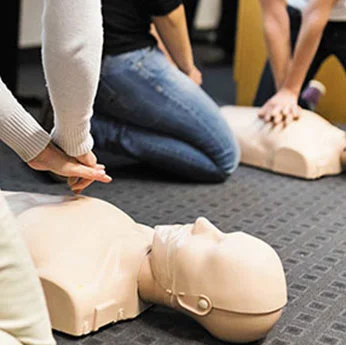continuingeducation
Explore the different continuing education courses we offer in our training center.
Offering Multiple other Services to our Allied Health Professionals
$40.00 Unlimited yearly CEUs Subscription
About Us
DIVERSE TRAINING CENTER, was founded by Leysi Casanova on November 14, 2018, with the goal of helping the community of individuals seeking to prepare for their future. Different are the continuing education courses and testing certifications that each year are added to our center, expanding the possibilities of professional improvement.


CEU Courses Online
Get your certifications with an unlimited membership for one year with access to all the courses required for your profession.


CNA Exam Review Class
Our Nursing Assistant exam prep classes review all required concepts and skills.
COURSES
Continuing Education
Expand your knowledge, explore a longtime interest, and meet new people. Whether you’re interested in finding a new hobby or meeting a professional goal, we have something for everyone! Learn about our options below and choose from a variety of courses taught by passionate educators and subject matter experts.
Flexibility
Continuing education adapts to the needs and schedules of adult learners. It can be delivered in various formats such as online courses, seminars, workshops, or part-time programs. This flexibility allows professionals to pursue further education without significantly compromising their work and personal responsibilities.
Practical and Applied Focus
In contrast to formal education, which often emphasizes abstract theories, continuing education tends to have a more practical and applied focus. The content is designed to be relevant and directly applicable to real-world work situations, facilitating the transfer of acquired knowledge and skills into daily practice.
Constant Updating
Continuing education is designed to keep individuals up-to-date in a rapidly changing world. Contents are regularly reviewed and updated to reflect advances in the industry, technology, and best practices. This ensures that professionals are equipped with the most recent and relevant information in their fields.
Enrolling Now
Home Health Aide Program
|
Enrollment Deadline
|
Start Date
|
Estimated Graduation Date
|
|---|---|---|
|
January 8, 2024
|
January 8, 2024
|
January 19, 2024
|
|
January 22, 2024
|
January 22, 2024
|
February 2, 2024
|
|
February 5, 2024
|
February 5, 2024
|
February 16, 2024
|
|
February 19, 2024
|
February 19, 2024
|
March 1, 2024
|
|
March 4, 2024
|
March 4, 2024
|
March 15, 2024
|
|
March 18, 2024
|
March 18, 2024
|
March 29, 2024
|
|
April 1, 2024
|
April 1, 2024
|
April 12, 2024
|
|
April 15, 2024
|
April 15, 2024
|
April 26, 2024
|
|
April 29, 2024
|
April 29, 2024
|
May 10, 2024
|
|
May 13, 2024
|
May 13, 2024
|
May 24, 2024
|
|
May 27, 2024
|
May 27, 2024
|
June 7, 2024
|
|
June 10, 2024
|
June 10, 2024
|
June 21, 2024
|
|
June 24, 2024
|
June 24, 2024
|
July 5, 2024
|
|
July 8, 2024
|
July 8, 2024
|
July 19, 2024
|
|
July 22, 2024
|
July 22, 2024
|
August 2, 2024
|
|
August 5, 2024
|
August 5, 2024
|
August 16, 2024
|
|
August 19, 2024
|
August 19, 2024
|
August 30, 2024
|
|
September 2, 2024
|
September 2, 2024
|
September 13, 2024
|
|
September 16, 2024
|
September 16, 2024
|
September 27, 2024
|
|
September 30, 2024
|
September 30, 2024
|
October 11, 2024
|
|
October 14, 2024
|
October 14, 2024
|
October 25, 2024
|
|
October 28, 2024
|
October 28, 2024
|
November 8, 2024
|
|
November 11, 2024
|
November 11, 2024
|
November 22, 2024
|
|
November 25, 2024
|
November 25, 2024
|
December 6, 2024
|
|
December 9, 2024
|
December 9, 2024
|
December 20, 2024
|
Hemodialysis Technician Program
|
Enrollment Deadline
|
Start Date
|
Estimated Graduation Date
|
|---|---|---|
|
May 20, 2024
|
May 20, 2024
|
October 25, 2024
|
|
October 28,2024
|
August 1, 2024
|
April 18, 2025
|
|
February 17,2025
|
October 28, 2024
|
August 1, 2025
|
Patient Care Technician Program
|
Enrollment Deadline
|
Start Date
|
Estimated Graduation Date
|
|---|---|---|
|
August 1, 2024
|
August 1, 2024
|
January 27, 2025
|
|
October 28, 2024
|
October 28, 2024
|
April 28, 2025
|
CENTER SAFETY
COVID-19 information and updates
Students Reviews
Esthela Morera
STUDENT
“Great instructor and book! They are very helpful if you do not understand a lesson”

Odalys Perez
STUDENT
“My experience at the school was very good, they have trained and prepared staff, we received good treatment from all the staff, I recommend it for future students”

Caroline Bardales
STUDENT
“Amazing service, I went to get my CPR Certification and when I tell you the process was so simple, easy and clean!! It couldn’t get any better! I’d definitely recommend 10/10. “

Lorena Maqueiro
STUDENT
“It was a very good experience, it is a highly recommended school, a super nice instructor, very good treatment and everything in order”

Ileana Ramas
STUDENT
“I want to thank and at the same time recommend the school because everyone is very professional and attentive. The teacher has extraordinary knowledge to teach classes where the student learns easily and learns very quickly. I congratulate them for their good work”


